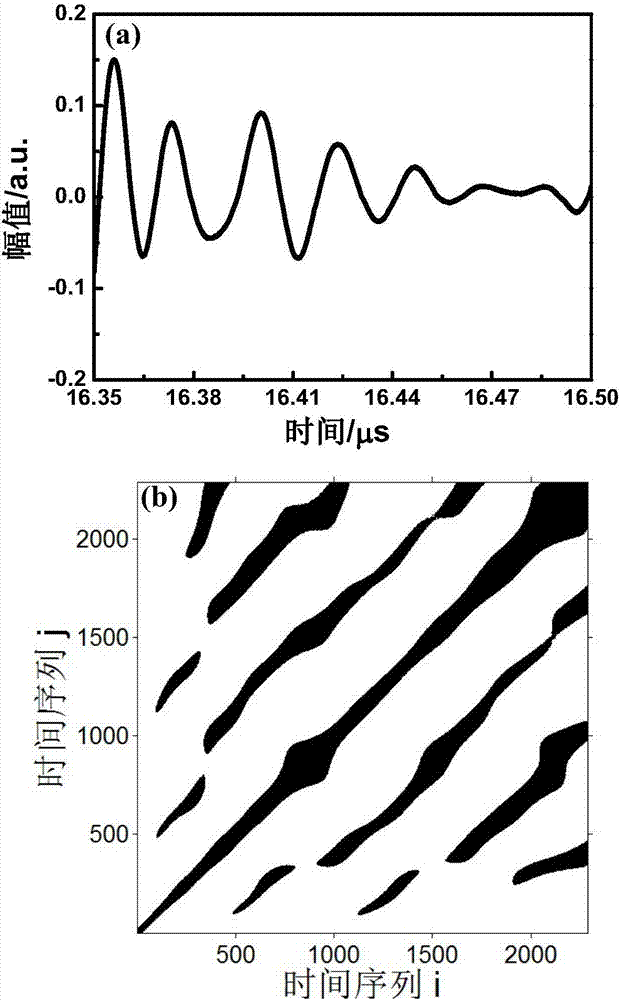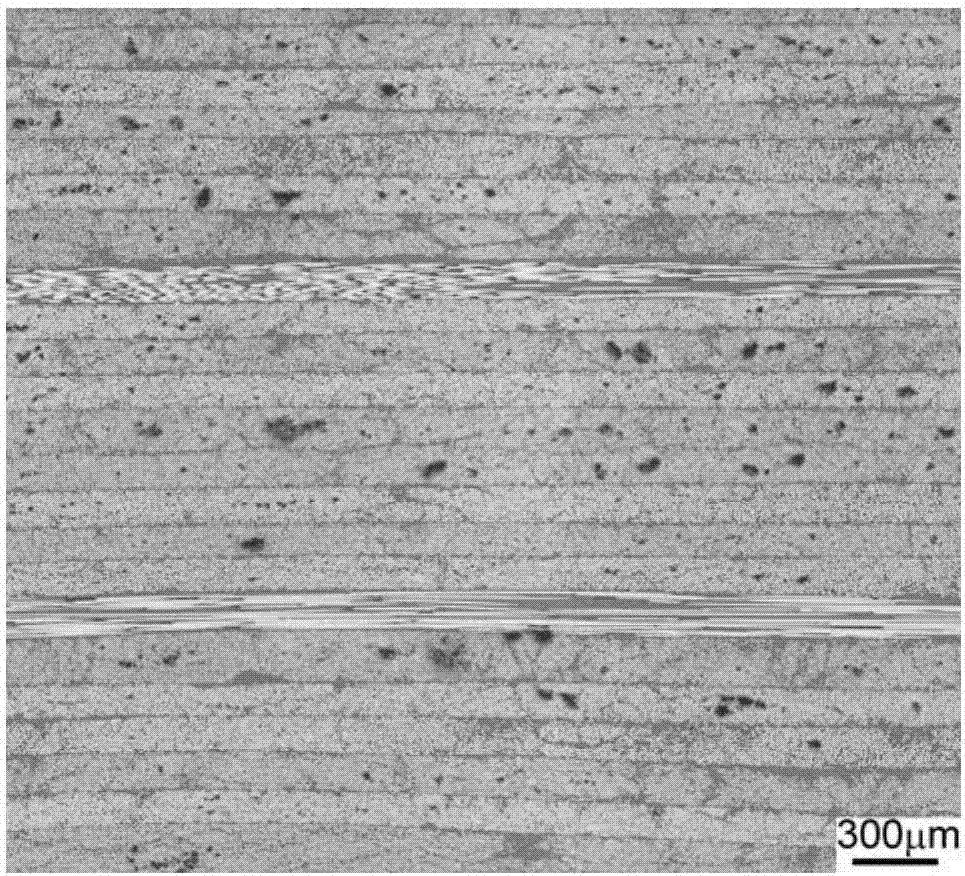CFRP porosity ultrasonic characterization method based on ultrasonic backscattered signal recurrence quantification analysis
An ultrasonic backscattering and quantitative analysis technology, which is applied in the analysis of solids using sonic/ultrasonic/infrasonic waves, can solve the problems of low accuracy of sound velocity and density measurement, inability to establish a general porosity curve in the manufacturing process, and high manufacturing difficulty. Strict requirements for stable process, good promotion and application prospects, and low detection environment requirements
- Summary
- Abstract
- Description
- Claims
- Application Information
AI Technical Summary
Problems solved by technology
Method used
Image
Examples
Embodiment Construction
[0031] The connection diagram of the ultrasonic signal acquisition system adopted by the present invention is as follows: figure 1 shown. The experimental sample in this embodiment is a multi-directional CFRP laminate prepared by hot-pressing prepreg, with a fiber content of 69±3%. The specific calculation steps are as follows:
[0032] (1) Acquisition of ultrasonic backscattered signals
[0033] With the help of the ultrasonic C-scanning system, the CFRP laminate is scanned by the ultrasonic reflection method, and the area with a relatively uniform color is selected as the area to be studied according to the obtained scanning image. figure 1 The ultrasonic signal acquisition system shown in the figure collects ultrasonic backscattering signals from 32 parts in the area to be studied, and takes the signals as the time series to be studied, as shown in figure 2 (a) shown.
[0034] (2) Phase space reconstruction
[0035] For an ultrasonic backscatter signal {x i}(i=1, 2,....
PUM
 Login to View More
Login to View More Abstract
Description
Claims
Application Information
 Login to View More
Login to View More - R&D
- Intellectual Property
- Life Sciences
- Materials
- Tech Scout
- Unparalleled Data Quality
- Higher Quality Content
- 60% Fewer Hallucinations
Browse by: Latest US Patents, China's latest patents, Technical Efficacy Thesaurus, Application Domain, Technology Topic, Popular Technical Reports.
© 2025 PatSnap. All rights reserved.Legal|Privacy policy|Modern Slavery Act Transparency Statement|Sitemap|About US| Contact US: help@patsnap.com



